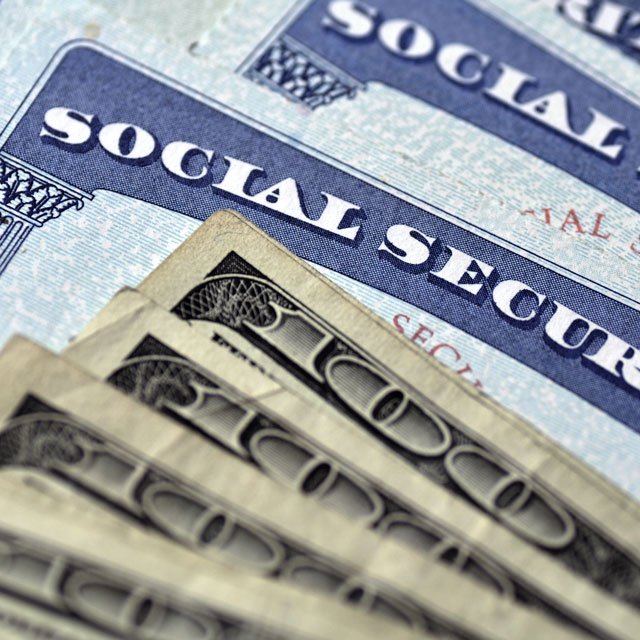10 Worst States for Older Americans' COVID-19 Test Results Now
The Milliman Report
Milliman — a Seattle-based actuarial consulting firm — recently reported that COVID-19 does affect the death rate for the kinds of conscientious, relatively affluent people who tend to own annuities. In 2020, COVID-19 increase the mortality of variable annuity contract holders by 11%, Milliman analysts found. "This study demonstrates that COVID-19 had and may continue to have a material impact on the variable annuity industry," Timothy Paris, a Milliman consulting actuary, said in a comment on the results.
New Data on Older Americans
The current pandemic intensity indicators for older Americans are looking much better than they were a few weeks ago. The percentage of people ages 75 and older who end up in the emergency room with diagnosed COVID-19 fell to 1%. That was down from 1.3% the previous week, and down from 4.6% four weeks earlier. Hospital admissions of U.S. residents ages 70 and older with confirmed cases of COVID-19 fell 27%, to 6,297. But the number of new cases is surging in South Korea and Hong Kong and some parts of Europe. The Community Profile Report shows that, in the median U.S. state, 3.3% of the people ages 65 who had a COVID-19 antibody test in the latest week has a positive result. One question is whether COVID-19 vaccinations and boosters will keep new COVID-19 cases from leading to serious COVID-19 illness. But the January figures for the full U.S. population show that some Americans continue to be vulnerable to COVID-19 mortality, whether that's because of lack of vaccinations or immune system problems or other problems that reduce the protective effect of the vaccines and boosters in some fully vaccinated people. For the 10 states with the highest positivity rates, see the gallery above. For COVID-19 test positivity data for all states with positivity data in the latest Community Profile Report, see the table below.
COVID-19 Screening Results for Older Americans, by State
| COVID-19 TesT PosItivity Rate, Ages 65+ Week Ending March 14 | Change from Previous Week, in Percentage Points | |
|---|---|---|
| Alabama | 3.9% | -2.2 |
| Arizona | 4.8% | -1.9 |
| California | 2.4% | -0.8 |
| Colorado | 1.4% | -0.9 |
| Connecticut | 2.5% | -0.2 |
| Delaware | 3.2% | 0.6 |
| Florida | 3.0% | -1.0 |
| Georgia | 3.0% | -1.4 |
| Hawaii | 3.0% | 0.0 |
| Idaho | 4.9% | -1.9 |
| Illinois | 1.5% | -0.3 |
| Indiana | 3.0% | -1.2 |
| Kansas | 3.5% | -0.3 |
| Kentucky | 4.7% | -1.9 |
| Louisiana | 1.7% | -0.4 |
| Maine | 3.8% | 0.4 |
| Maryland | 1.8% | -0.3 |
| Massachusetts | 1.9% | 0.0 |
| Michigan | 3.8% | -0.5 |
| Minnesota | 2.5% | -0.7 |
| Mississippi | 3.9% | -1.4 |
| Missouri | 4.0% | -0.1 |
| Montana | 3.2% | -1.1 |
| Nebraska | 7.5% | 0.0 |
| Nevada | 5.1% | -0.3 |
| New Hampshire | 3.0% | 0.0 |
| New Jersey | 2.5% | -0.4 |
| New Mexico | 6.7% | -2.2 |
| New York | 2.3% | -0.1 |
| North Carolina | 3.4% | -1.3 |
| North Dakota | 2.4% | -0.7 |
| Ohio | 2.8% | -0.6 |
| Oklahoma | 4.5% | -0.6 |
| Oregon | 3.3% | -0.3 |
| Pennsylvania | 3.2% | -0.6 |
| Puerto Rico | 3.3% | -0.4 |
| Rhode Island | 2.3% | 0.3% |
| South Carolina | 3.5% | -0.5% |
| South Dakota | 3.8% | -1.8% |
| Tennessee | 5.1% | -5.1% |
| Texas | 3.5% | -1.4% |
| Utah | 5.3% | -0.8% |
| Vermont | 3.6% | 0.4% |
| Virginia | 4.9% | -2.6% |
| Washington | 2.5% | -1.2% |
| West Virginia | 4.8% | -1.8% |
| Wisconsin | 2.3% | -0.5% |
| Wyoming | 3.4% | -1.1% |
| MEDIAN | 3.3% | -0.6% |
© Touchpoint Markets, All Rights Reserved. Request academic re-use from www.copyright.com. All other uses, submit a request to [email protected]. For more inforrmation visit Asset & Logo Licensing.

Featured Resources
View All
Sponsored by Manulife John Hancock Investments
Exploring Private Credit's Journey to a Trillion-Dollar Asset Class

Sponsored by Manulife John Hancock Investments
What's missing from today's large-cap allocations? Value stocks

Sponsored by Manulife John Hancock Investments
Can Rolling Returns Offer a Better View of Investment Success?

Sponsored by Manulife John Hancock Investments
As Reinvestment Risk Emerges, How Should Investors Navigate Market Uncertainty?



